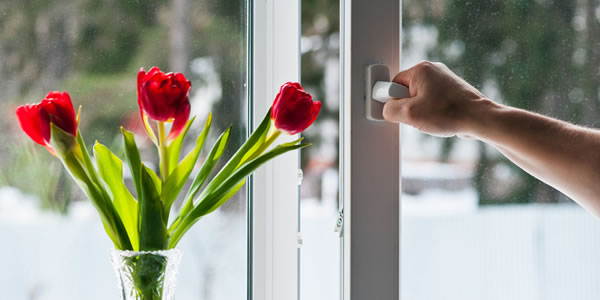A Bright Idea: Energy Efficient Windows
If your home features older windows, chances are 25 per cent or more of your heating/cooling dollars are going out the window. Drafty windows not only make your home uncomfortable, they waste precious energy and drive heating and cooling bills up.
You can check for air leaks around your windows with a simple test: on a cold or windy day, take a thin piece of tissue or plastic and hold it near your window frames. If the tissue or plastic flutters, that indicates an air leak. You can also use the smoke of a lit incense stick as a tester.
Another indication of air leaks is frost or condensation on your windows. Left untreated, the window frame will rot and mould will form.
According to Natural Resources Canada, energy-efficient windows are an investment that will:
- Increase your comfort by reducing cold drafts and making a house feel warmer during the heating season.
- Help control condensation. The interior surfaces of energy-efficient windows stay warmer, which means you can maintain a higher level of relative humidity without worrying about condensation on the windows.
- Save you money. Minimizing air leakage and improving the thermal performance of your windows, by adding interior storm windows, for example, could improve their energy efficiency by up to 50 percent and reduce your energy bills.
- Last longer. Condensation can cause premature deterioration of windows, as well as walls and finishes, leading to costly maintenance or replacement.
- Improve indoor air quality and contribute to a healthier living environment. By reducing condensation, energy-efficient windows can help prevent mould growth.
- Reduce the penetration of dust, dirt, insects and sound into your home.
- Reduce energy consumption.
When shopping for replacement doors, windows and skylights, look for the Energy Star rating system label. Energy Star-rated products should save up to 40 per cent more energy than conventional models. Although consumers can expect to pay more for Energy Star-rated doors, windows and skylights, the cost is returned in energy savings and resale value. At a minimum, replacement windows should be thermal, but with rising energy costs, more homeowners are opting for triple glazing.
For more information on the Energy Star rating system and guides to buying new windows, doors and skylights, visit the Natural Resources website at http://www.nrcan.gc.ca.
Courtesy: Homeservice Club


